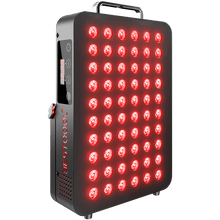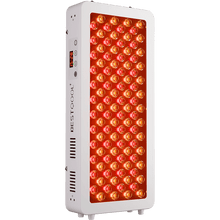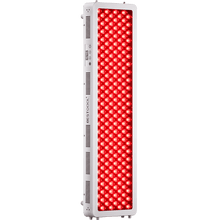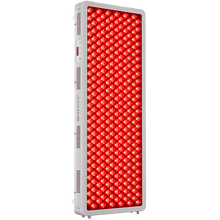Some people must deal with tinnitus, a consistent buzzing or humming noise inside their ears. The result is a condition that can interfere with daily life and, unfortunately, lead to stress, anxiety and, in some cases, depression.
Traditional treatment often comes up short, leaving those suffering to seek alternative therapies. Fortunately, a new alternative has appeared in recent years: red light therapy (RLT), offering potential therapeutic results for patients suffering from tinnitus.

Understanding Tinnitus, the Easy Way
Tinnitus is a type of noise or ringing in the ears. The most common and known cause is a result of exposure to noise, with other causes such as ear infections, head injuries and frequently age-related hearing loss.
You could have mild symptoms or more severe ones, including a constant or intermittent pinching noise that impacts your concentration, sleeping patterns, and overall quality of life.
Conventional Treatments and Some of Their Limits
Current treatment options for tinnitus can include:
- Some hearing aids: Often used to amplify the external sounds, helping to alternate and hide tinnitus.
- Clinical sound therapy: Uses external noise in a specific way to alter the perception of tinnitus.
- Cognitive Behavioral Therapy (CBT): targets changing the patient's emotional response to tinnitus.
- Medications: in some cases, prescribed to alleviate symptoms, though their effects vary depending on various conditions.
Despite these different treatments, many people continue to struggle with persistent symptoms, highlighting the need for an alternative therapy such as the RLT.
Exploring Red Light Therapy
Red Light Therapy (RLT) in brief, consists of exposing body tissues to specific low levels of red or near-infrared light. This 100% non-invasive treatment is useful to promote cellular activities, and reduce inflammation symptoms.
RLT device is already used for a variety of health conditions, including skin rejuvenation, pain relief, and wound healing.
How RLT Can in Some Cases Help Tinnitus
The proposed link between RLT and tinnitus derives from the treatment purportedly enhancing cellular functioning to decrease inflammation. Based on these studies, researchers theorize that RLT may enhance blood circulation and decrease oxidative stress in the auditory system to treat tinnitus symptoms. Several proposed mechanisms include:
- Improved mitochondrial function: RLT can improve the energy produced in cells to help them heal and reduce inflammation.
- Enhanced blood circulation: Proper blood flow means you have a faster way to get all those healing cells down into your auditory system, repairing damage and maintaining hearing.
- Reduction of oxidative stress: RLT may protect auditory cells from damage by reducing harmful free radicals.

Real-Life Examples and Scientific Support
Now, let us introduce a few case studies and research that support RLT for tinnitus.
For example, a Noise & Health study reported that subjects who underwent RLT saw their tinnitus severity decrease by 24 percent.
This potentially links back to RLT. According to another research article in Photomedicine and Laser Surgery, chronic sufferers had found an alleviation from the mysophobia tinnitus as well.
Using RLT for Tinnitus Relief
Here are some rules to follow so you can make the best results with RLT in tinnitus:
- For device selection: Select RLT [red light therapy] ear-specific treatment devices.
- How often: Most experts recommend periods and sessions of 20-30 minutes daily.
- Precautions: Before using RLT, have a discussion with your healthcare provider to determine if it would be appropriate for you.
Benefits of Red-Light Therapy for Tinnitus
RLT has many benefits for people who have tinnitus, such as,
- Non-invasive: doesn't require surgery or medication, so there are little to no risks of side effects
- Drug Free: A safe and natural option for those who do not want to expose themselves to medication.
- Long-term relief: Consistent use of RLT may provide long-lasting improvement in tinnitus symptoms.
- Quality of life: When the severity of tinnitus is decreased, it follows that overall well-being and functional status will improve.
Unlocking a New Treatment Potential
Red light therapy device shows great promise for the treatment of tinnitus. It uses a noninvasive and drug-free approach, making it ideal when conventional methods have failed. Although additional research is required for a more in-depth study of its efficacy, the results from early studies and real-world cases seem promising. If you want to learn more about the possible effects RLT may have on your tinnitus or think this new therapeutic method is a good fit for you, ask your healthcare provider.
These treatments offer new hope and allow us to look forward to one day living a life free from the constant noise of our tinnitus.
Sources:
- Noise & Health JournalJournal, Recent Study on RLT and Tinnitus (2019)
- Photomedicine and Laser Surgery JournalJournal, Research on RLT and Chronic Tinnitus (2020)














 Small
Small

 Moderate
Moderate

 Moderate
Moderate

 Moderate
Moderate

 Full
Full



